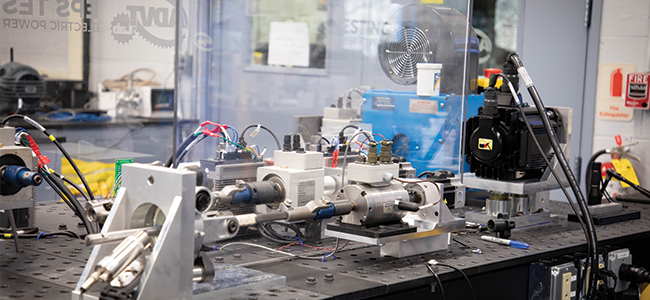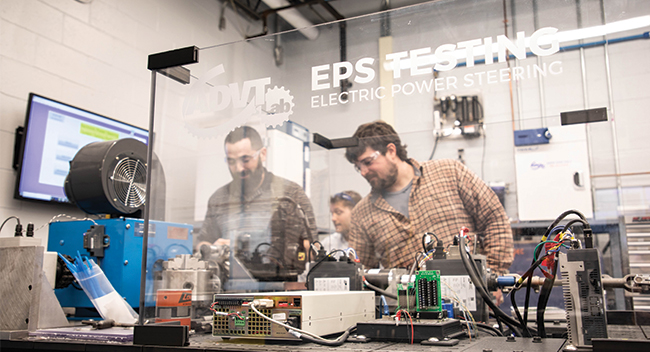Product Development for Electric Power Steering
Can your vehicle parallel park by itself? Does it correct your trajectory when you’ve drifted into another lane? These are just a few of the new advancements in advanced driver assistance system (ADAS) technology that are made possible because of Electric Power Steering (EPS).
In 2018, an automotive study forecasted that the EPS market will reach $42.01 billion by 2025, a significant increase from the $25.83 billion reported in 2017. Why such a drastic increase? Government agencies are becoming more stringent with automotive safety regulations. This means that original equipment manufacturers (OEMs) must include more electronic sensors, and therefore more electrification into their vehicles to alert drivers to impending dangers.
If an EPS system is not properly lubricated, a great deal of heat is generated due to the sliding nature of the worm assembly. Lubricants are critical to reducing the amount of heat generated so that EPS systems can operate at higher loads without system failure or reduced torque.
In 2015, Nye developed a custom EPS test apparatus. This multi-stage system allows engineers to simulate road conditions and life endurance tests on customer supplied EPS units while measuring frictional torque, heat generation, wear, and more. Nye engineers are currently using the data collected by this apparatus to formulate next-generation EPS greases that reduce frictional torque. Our EPS test apparatus is composed of three separate apparatuses that accurately simulate EPS operations: A Magnetic Brake System, On-Road Conditions, and a Parking Check.
Magnetic Brake System
Our magnetic brake system simulates an OEMs ‘run-in’ process. This is a high load, high speed, test entirely dedicated to removing high spots—or residual imperfections from the manufacturing process. When high spots are removed, it allows our engineers to understand how our lubricants will perform in an aged EPS system.
On-Road Conditions
This apparatus simulates routine operations. How does it work? The apparatus uses a feedback loop with two server motors that rotate from 0-540 degrees at 30 rotations per minute. Engineers can then use the feedback loop to simulate specific loads at different wheel rotations. OEMs are constantly trying to create systems that operate at higher loads. Our apparatus can simulate loads of up to 120 newton-meters to simulate the different EPS load requirements. Using the apparatuses infrared camera, our engineers can see the temperature distribution of the entire gear assembly. This allows us to assess how well our lubricants are reducing the amount of heat generated by the motor under specific loads and wheel rotations.

Parking Check
This apparatus is a non-loaded parking check, also known as a Backdrive check. This uses a high-resolution torque transducer to assess gear-to-torque distribution when a wheel is turned all the way in one direction. With this information, our engineers can remove the peaks and valleys of that distribution data to obtain the average gear-to-torque distribution for the system. This test allows us to understand frictional characteristics in EPS systems and how they affect the “feel” of steering.
Better Tests = Better Formulations
Each of these tests provides an accurate simulation of EPS steering which enables Nye engineers to understand how a lubricant will perform under specific operating conditions. Using this information, we can recommend or formulate the best lubricant for your EPS system. To learn more about our EPS test apparatus, download our comprehensive test guide.


